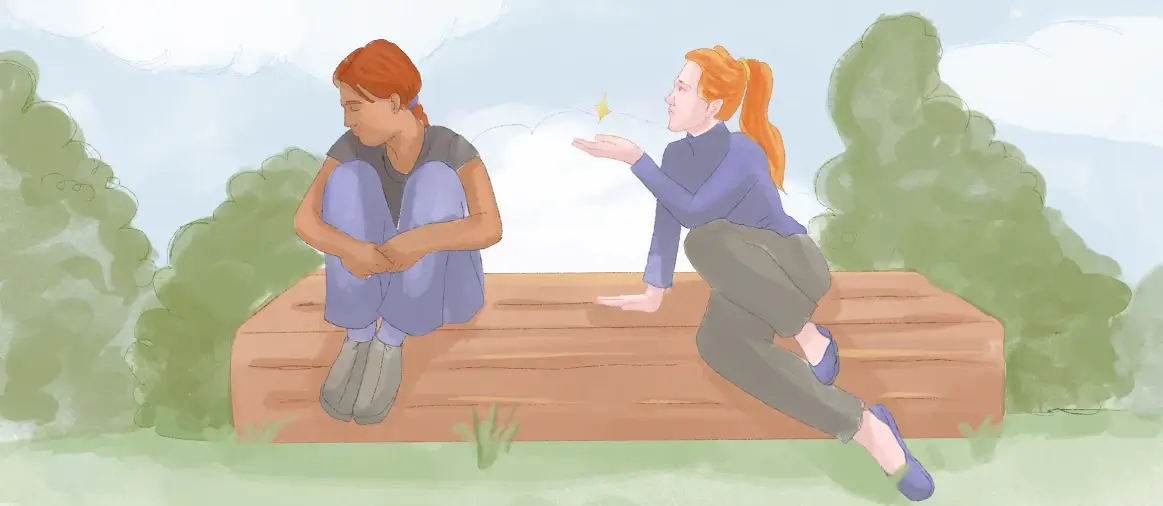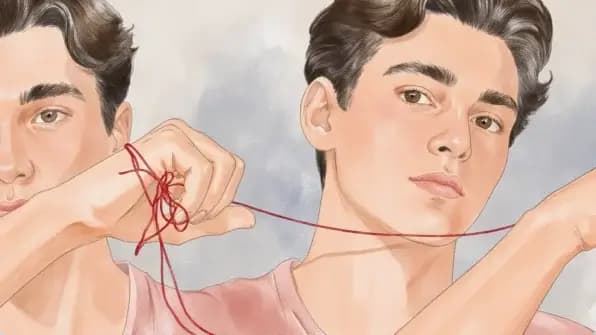Why is knowing your attachment style important? Relationships with friends, family, and particularly romantic relationships all involve forming attachments with someone else. Having healthy relationships is part of what makes life enjoyable.
Attachment theory identifies different attachment styles based on early interactions with primary caregivers. Dismissive-avoidant attachment is one of these styles.
Do you have a general preference for emotional distance and self-reliance? Maybe you can identify with this attachment type or know someone who does.
If the word “avoidant” on its own rings a bell, read on. You’ll discover specifics about what sets the dismissive avoidant attachment style apart from others.
Learning about your attachment style can be vital to unlocking mysteries about relating to the people you care most about.
Types of Attachment Styles
Figuring out your attachment style can benefit you. In my therapy practice, clients explore their attachment style to help their self-awareness and contribute to their overall well-being.
You may be able to locate your style quickly by reading through these descriptions:
- Secure Attachment Style: Set apart from insecure attachment, a person with secure attachment tendencies feels comfortable with intimacy and independence.
- Anxious Preoccupied Attachment Style: This is an insecure form of attachment. It involves seeking constant reassurance and having persistent worries about one’s relationships.
- Disorganized (Fearful) Avoidant Attachment Style: – Insecure by nature, disorganized attachment involves hard-to-predict behaviors and confusion.
- Dismissive Avoidant Attachment Style: Suppressing emotions and avoiding intimacy to protect yourself from rejection and pain shape this style.
Want to explore your mental well-being to discover your strengths?
What is Avoidant Attachment Style?
Avoidant attachment, or insecure-avoidant attachment, is a set of traits that typically develops from early childhood experiences.
If caregivers were consistently unresponsive or emotionally unavailable, the child might learn to suppress their need for closeness and become overly self-reliant.
In some cases, children are encouraged to be highly independent at a young age, which can lead to the development of dismissive avoidant attachment style traits.
Do you find yourself wondering, “Am I emotionally unavailable?” If you or a loved one has this attachment style, you will likely see a downplaying of the importance of close relationships. You could be feeling an aloof or detached vibe, too.
The good news? You’re in the right place to develop self-awareness and be on a path toward lasting change.
Characteristics of avoidant attachment style
- Emotional distance—There’s a tendency to avoid deep emotional connections and intimacy. Preferring to maintain independence is a piece of the dismissive-avoidant puzzle.
- Self-Reliance—There’s a sense that one does not need others to fulfill one’s emotional needs; reliance on others is viewed as a weakness or a shortcoming.
- Low anxiety – Unlike other insecure attachment styles, dismissive-avoidant folks are less concerned about rejection or abandonment because they do not place as much importance on emotional closeness.
- Avoidance of intimacy—This attachment style includes a tendency to avoid commitments and serious relationships. A person might also push others away to protect their sense of autonomy.
- Difficulty expressing emotions— There’s what appears to be a struggle to understand or empathize with the emotional needs of others. The person might appear standoffish.
If self-discovery is your thing, consider a Breeze Test! Emotional intelligence, measured with EQ, can help you better understand how to attach to others.
Types of Avoidant Attachment
Avoidant attachment is a category of insecure attachment styles characterized by a reluctance to form close emotional bonds and a preference for emotional distance and independence.
Avoidant attachment style traits vary depending on whether a person fits into one of two main subtypes: dismissive avoidant attachment and fearful avoidant attachment. Each has distinct characteristics and underlying motivations.
Fearful-Avoidant Attachment vs. Dismissive Avoidant
What’s the difference between fearful avoidant and dismissive avoidant attachment? Both styles can significantly affect relationships and personal behavior but have distinct characteristics and underlying motivations. Let’s break down some key differences between the two attachment styles:
| Dismissive Avoidant Attachment Signs | Fearful-Avoidant Attachment Signs |
| Low anxiety, more focused on independence and self-reliance, and avoids emotional closeness | High anxiety about relationships, fear of rejection and intimacy |
| Maintains emotional distance, avoids deep connections, and prioritizes self-sufficiency | Sends mixed signals, alternating between seeking and avoiding closeness |
| Motivated by a desire to avoid dependency and maintain autonomy | Motivated by a fear of being hurt or abandoned, leading to ambivalence in relationships |
Signs of Fearful Avoidant Attachment
- The fearful-avoidant style is dominated by fear of intimacy and rejection. If you or a loved one has this style, you may see a desire for close relationships and a fear of being hurt or rejected. This fear creates a push-pull dynamic, where they may approach others for connection but withdraw when things become too intimate.
- Someone with fearful-avoidant tendencies tends to send mixed signals, alternating between seeking closeness and distancing themselves from others. This inconsistency can confuse partners or friends.
- People with this attachment style often experience high levels of anxiety in relationships. They may worry about being abandoned or not being good enough, thinking, “No one cares about me,” which fuels their fears and avoidance behaviors.
- Fearful-avoidant attachment is often linked to past trauma or inconsistent caregiving in childhood, where the person learns that others can be both a source of comfort and pain.
- A fearful-avoidant person may have intense, short-lived relationships where they reach a certain level of intimacy and end the partnership abruptly.
- The person with this style tends to be ambivalent about commitments with partners, family, friends, and other obligations.
- The fearful-avoidant person may also struggle with self-esteem and trust issues rooted in their past.
Signs of Dismissive Avoidant Attachment
- A person with a dismissive-avoidant attachment style prioritizes self-sufficiency. They often downplay the importance of relationships due to an intense desire for independence.
- This attachment style can involve keeping an emotional distance from others and avoiding deep emotional connections and intimacy. The person may appear aloof or unresponsive to emotional needs.
- Unlike the fearful-avoidant style, a dismissive-avoidant woman or man generally has low anxiety about relationships. They tend to suppress or deny their emotions and may not see the value in discussing feelings.
- This style often develops from childhood, when emotional needs are neglected, leading the person to adopt a self-reliant attitude as a defense mechanism.
- Behaviorally, a person with a dismissive-avoidant attachment may have difficulty expressing emotions and have low EQ.
- They tend to avoid commitments and serious relationships and can appear emotionally detached or indifferent.
Is There an Attachment Disorder?
Avoidant attachment disorder is not a formally recognized diagnosis in psychological literature or diagnostic manuals such as the DSM-5 (Diagnostic and Statistical Manual of Mental Disorders, Fifth Edition).
However, avoidant attachment patterns are well-documented within the framework of attachment theory, which describes how early interactions with caregivers can influence an individual’s approach to relationships throughout life.
What Causes Dismissive Avoidant Attachment?
We know that early childhood plays a significant role in developing attachment issues.
Childhood adverse experiences, or ACEs, are at play when determining the impact a childhood has on someone; however, it’s not as black and white as you may think.
When caregivers are emotionally unavailable or neglectful, children react by learning to suppress their emotions and rely on themselves as a survival mechanism.
These caregivers might even mean well but do not respond consistently or sensitively to the child’s emotional needs. With this parenting style, the child may learn to believe expressing emotions is unwelcome.
Another example is parents who overly emphasize independence and self-reliance. Out of necessity or based on the parenting they received, these caregivers encourage the child to handle problems alone.
By not being emotionally responsive, caregivers teach the child that emotions or having too many needs are unacceptable.
After a while, the child may believe they are a burden. This guidance often leads to the child suppressing their feelings.
Some cultures value independence and self-reliance more highly than others, influencing parenting styles and children’s attachment styles. Social norms that focus on self-sufficiency can reinforce dismissive avoidant tendencies.

What trauma causes dismissive avoidant attachment?
There’s not one specific traumatic experience that leads to any one attachment style. The type of trauma that typically causes dismissive avoidant attachment could be ongoing and complex, or it could be an isolated incident.
Emotional or physical neglect is a primary traumatic cause, specifically betrayal trauma or abandonment trauma, where a caregiver leaves for any period of time when the child is unsure when they will return.
Prolonged separations from primary caregivers, such as through hospitalization or family disruptions, can contribute to developing avoidant attachment behaviors, including a dismissive-avoidant style.
Is a traumatic past part of your story? We see you. In my therapy practice, I have multiple clients whose trauma experience has impacted their well-being. We can work through it, but having a baseline understanding is helpful. Consider taking a Breeze Childhood Trauma test to dive into self-discovery today.
Dismissive Avoidant Attachment in Relationships
All attachment styles impact relationships, no matter how secure they are. Dismissive avoidant attachment can create challenges in forming and maintaining close, intimate bonds.
A person with this attachment style will likely prioritize self-reliance over emotional closeness, leading to specific behaviors and patterns in their interactions with romantic partners.
Other features are at play and include the following:
- The person struggles to express their genuine human emotions and may appear emotionally detached or indifferent. These traits make it difficult for partners to understand their feelings and needs.
- The person resists relying on their partner for emotional support, leading to a sense of isolation or “one-sidedness” in the relationship.
- There’s an overall skepticism of others’ motives and reliability. The person often doubts that their partner can meet their emotional needs.
- There’s a prevailing feeling of defensiveness and dismissiveness of their partner’s emotional needs. An increase in conflicts and misunderstandings can develop as a result.
- The person shows reluctance to share emotions, which can create a communication gap. Partners may be feeling disconnected.
- The person has difficulty forming deep emotional bonds due to the trauma they experienced, with caregivers providing inconsistent care and attention.
Additionally, a person with this attachment style may avoid addressing conflicts or emotional issues, leading to unresolved tensions and frustrations in a relationship.
This avoidance can be perceived as indifference as if the person just doesn’t care, even if they do. They may also provide a minimal response, creating distance in the relationship.
“One of my therapy clients,” says Rychel Johnson, a licensed clinical professional, “has been working through avoidant attachment, which shows up as feeling numb when conflict arises.”
Often, a person in an avoidant attachment relationship will keep relationships superficial as a self-protective mechanism. This pattern can lead to connections that lack fulfillment or depth, often leading to a breakup.
The breakup appears not to affect the dismissive avoidant attachment man or woman because they’ve remained closed off to protect themselves from potential emotional pain.
Anxious vs. Avoidant Attachment
In a relationship between an avoidant attachment person and an anxious attachment person, a cycle of “pursuit and withdrawal” can develop.
The anxious partner seeks closeness and reassurance, often asking themselves, “Why do I get attached so easily?” while the dismissive-avoidant partner withdraws to maintain distance, leading to a repeating pattern of conflict and frustration.
With effort, relationships between anxious and avoidant attaching folks are possible. Learning about your attachment style is an essential first step.

How To Fix Dismissive Avoidant Attachment
It may seem incredibly challenging or impossible to fix a dismissive avoidant attachment style, particularly one rooted in deep emotional pain or neglect.
Yet, such folks can work on gradually building trust in their relationships. By intentionally addressing trust and emotional connection, they can allow themselves to rely on their partner in small, manageable ways.
In a romantic relationship, partners can demonstrate consistency and reliability. This deliberate focus can increase a sense of security and improve the relationship dynamic.
So, learning to recognize and express emotions can enhance emotional intimacy and communication with partners.
Practicing vulnerability in safe and supportive environments can help people with avoidant dismissive attachment traits become more comfortable with emotional closeness.
Also, setting and respecting healthy boundaries can help balance independence and intimacy in the relationship.
Disclaimer
This article is for general informative and self-discovery purposes only. It should not replace expert guidance from professionals.
Any action you take in response to the information in this article, whether directly or indirectly, is solely your responsibility and is done at your own risk. Breeze content team and its mental health experts disclaim any liability, loss, or risk, personal, professional, or otherwise, which may result from the use and/or application of any content.
Always consult your doctor or other certified health practitioner with any medical questions or concerns
Breeze articles exclusively cite trusted sources, such as academic research institutions and medical associations, including research and studies from PubMed, ResearchGate, or similar databases. Examine our subject-matter editors and editorial process to see how we verify facts and maintain the accuracy, reliability, and trustworthiness of our material.
Was this article helpful?






